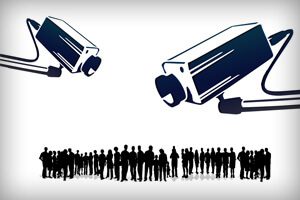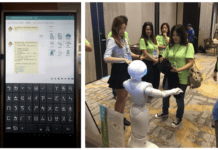

When the concept of smart cities was born, citizens around the world wouldn’t have thought about the privacy concerns that are rising today. One of the biggest concerns for people has opened up into an endless debate and controversies are filling the air with new initiatives being rolled out in different parts of the world.
Artificial Intelligence, IoT, machine learning and agent-based modelling has given a new meaning to smart technologies, software and algorithms. In other words, whether it is a trash bin, a street light, a traffic light or benches in public areas, whatever you use make a mark of your movements.
It is true that the data-gathering technologies help cities and private organisations improve their major decisions related to their role in infrastructure development, transportation, etc. But citizens and privacy experts feel this to be an interference with the life experiences of people. Read on to learn some initiatives that follow the trail.
Are Sensors Interrupting Life In Peterborough?
Residents around three areas in Peterborough, UK are living under an environment being constantly monitored by sensors. CityFibre, a broadband start-up has deployed a host of sensors that are meant to be for the betterment of the residents.
There are noise sensors that detect trespassing in vacant properties, parking sensors that send quick alerts to authority for illegal parking, sensors that track humidity and condensation to spot damp and those which detect wasted heat in communal areas to alert when fire doors were opened. All of this data is transmitted in real-time to social housing landlord Cross Keys Homes.
Big Brother Watch, a non-profit privacy campaigning organisation in the UK took notice of the trial that apparently has turned the neighbourhoods into surveillance zones.
A spokesperson for the non-profit revealed that “Many residents will feel deeply uncomfortable living surrounded by noise sensors and parking sensors. They’re being treated like lab rats in a surveillance experiment. The council ought to review this decision urgently.”
On the other hand, a CityFibre spokesperson said that the new IoT sensors are not monitoring personal data but only the environmental data. Such applications have the potential to enhance safety and comfort while increasing energy efficiency and cost savings for the residents.
While a spokesperson for Cross Keys Homes confirmed that the sensors have been installed after full permission from the residents and they have the right to refuse it. The cost savings they gain will be reinvested into their home properties and into developing more affordable homes.
This trial follows criticism of similar kind in Toronto, for the Sidewalk Labs waterfront project that will be created into a high-tech community equipped with a host of sensors.
Ann Cavoukian, the Director of Privacy for the ambitious project resigned after learning that not all data collected from residents would be kept unrevealed. In her resignation letter, she highlighted privacy concerns for smart cities as her reason for leaving.
The Canadian Civil Liberties Association has raised concern that it would trespass people’s privacy and has sued the Canadian government and the local government.
London Transport Tracking Passenger Journeys
Another trial encouraged by Transport for London (TfL) reveals plans to track tube passenger journeys across the network using WiFi and device MAC addresses. A similar pilot project was carried out in 2016.
As per reports, TfL will soon begin monitoring and analysing the movement of commuters by tracking their mobile devices as they travel around the London Underground network which comprises about 260 stations.
TfL claims that the data gathered will aid in improving transport services by getting a better insight into the exact routes taken by people. Going further, the citizens will be provided with information that helps them plan their commute by avoiding delays and congestion.
However, privacy expert Professor Earke Boiten, director of the Cyber Technology Institute at De Montfort University, Leicester has put light on several privacy concerns. Even though the 2016 pilot was carried out with much alertness, some of them argue that such trials are a critical privacy invasion to capture what trips people are making.
TfL has asked people to switch off the phone’s WiFi or put their phone on airplane mode when travelling through the network – if they do not want their movements to be recorded. But as Professor Boiten remarks that this is not an acceptable method to cop-out, it also raises a question as to what if people need access to WiFi while travelling. Positively, an advantage is that there is an option that allows people not to register for the ‘free’ WiFi. But a downside with that is the process of registering for WiFi conceivably undermines the protection built into the system.
As far as the citizen’s are concerned, they tend to accept the presence of such technologies – indifferently. There is, of course, recurrent panic over privacy when they notice it.
What If We Could Really See What The Surveillance Technology Is Capturing?


There is really something surveillance machines can interpret about humans. And people should be aware of how they really work and what are the extensive possibilities with them.
They follow a step-by-step process of acquiring data. For example, The Machine’s Eye is a simulation that unveils the process through which a hypothetical AI system interprets a physical environment and is able to make a profile of individuals.
The process begins with data being collected from several interconnected devices such as smartphones, microphones, CCTV, sensors, etc. Then it analysing the data and organising it directly from the physical environment. This includes the type of set up, the dimension of the room, the number of people present inside, the languages being spoken, accents, genders and types of conversation. Next, it interpolates this data with what can be found about each individual online – social media, online posts, databases and personal pages.
Finally, the AI machine is able to collect all the data and create an accurate profile of a targeted individual – indicating the reasonableness of family prospects, personal relationships, life expectancy, productivity and their contribution to society on financial and social grounds.
How algorithms understand a physical environment is being explored by several organisations. Such projects which involve merging machine-driven data representations with a human perspective are able to see only a fraction of what is possible by algorithms. In the real world, the volume of data detected by sensors and the computational potential of algorithms to process information generates a bigger and more nuanced picture of the urban environment.
So, it appears that the smart cities we are living in are actually not truly smart for the people. For this, a possible solution comes to light when the citizens in the urban space are made aware of how these surveillance technologies really work. This way the people will be able to decide what data they are comfortable with sharing and how they could protect their privacy as they are moving around the city, using public amenities or residing in sensor-fitted houses.
It is likely that an extended resolution to privacy concerns is smart adopting data transparency for making people feel comfortable where they live, work and play. But it is actually the local governments who need to act first.



































